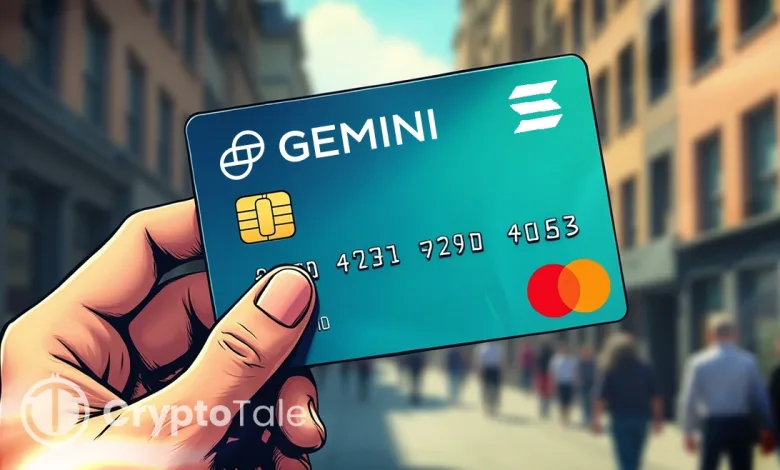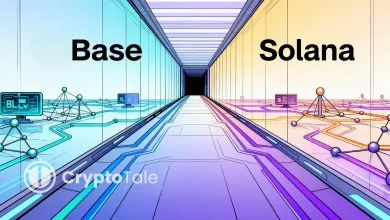Solana Credit Card by Gemini Turns Spending into Staking

- Gemini partners with Solana to combine credit rewards with blockchain staking.
- Users increase their yield by staking SOL rewards directly through Gemini’s new credit card.
- Users can earn up to 4% back in SOL on everyday purchases, with select partners offering up to 10%.
Gemini, the cryptocurrency exchange founded by the Winklevoss twins, has introduced a Solana-branded credit card offering users automatic staking rewards on their spending. The new Gemini Credit Card, issued by WebBank and powered by the Mastercard World Elite program, lets cardholders earn yield directly in SOL, marking a significant integration between traditional finance and blockchain-based rewards.
Solana Credit Card Offers Up to 10% in Rewards
According to Gemini, users can earn up to 4% back in SOL on daily purchases such as gas, EV charging, and rideshare services. Specific partners will provide up to 10% back on select purchases, which means that frequent spenders will still be able to earn higher yields. Besides, no annual or foreign transaction fees are applied to the card, allowing users to receive crypto rewards without any additional cost.
Gemini said the card allows customers to “support the Solana network while earning yield on everyday purchases.” Rewards earned in SOL can be automatically staked on the Gemini platform at a 6.77% yield rate, turning spending into an on-chain yield-generating process. Staking rewards are earned by locking up tokens to help validate transactions and strengthen the Solana network.
In a statement, the company explained, “Customers can now opt to automatically stake their Solana credit card rewards at Gemini, where the staking rate currently stands at 6.77%.”
Linking Traditional Payments with Blockchain Staking
The integration allows users to transform their credit card rewards into active participation in the Solana blockchain ecosystem. Validation of transactions and the addition of new blocks to the network by the node operators occur through decentralized smart contracts, which is how the staking is conducted. The validators are rewarded for their labor, and the token holders who have staked their SOL get a portion of those rewards.
Gemini stated that this process “turns everyday spending into an investment in the Solana network’s growth and security.” The exchange chose Solana due to its high transaction throughput, low latency, and vibrant developer community.
Gemini data indicates that Solana rewards have been among the best-performing assets on its platform. According to the company, users who kept their Solana rewards for one year or more enjoyed a profit of more than 290%; hence, the potential for compounding advantages of staking over time is evident.
Related: SEC-Gemini Agreement Signals New Path for Crypto Yield Products
Gemini Expands Its Product Line After IPO
The Solana card launch follows Gemini’s August collaboration with Ripple to introduce an XRP-branded credit card, part of a broader strategy to diversify crypto reward programs. The firm completed its initial public offering (IPO) last month at $28 per share, raising $425 million and valuing the company at $3 billion.
Gemini said the latest launch aims to “combine consumer payments with decentralized finance (DeFi) mechanics.” This innovation reflects a broader trend of financial products merging traditional banking models with blockchain incentives.
At the same time, Solana’s market performance has cooled. Data from CoinMarketCap showed SOL trading at $184.33, down 4.67% over the past 24 hours. The value of the token in the market dropped to $100.74 billion, while the trading activity over the past day decreased by 7.71% to $5.67 billion. The graph depicted a decline from $193.14 to $184, indicating a consistent sell-off on the main exchanges.
The new credit card, coupled with Gemini’s automatic staking feature, highlights Solana’s integration into crypto-native financial tools that are not limited to spending but also reward participation.





